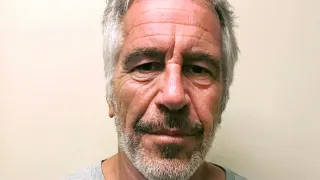March 12, 2014
Workers Preparing to Enter New Mexico Nuke Dump
Michael Cox READ TIME: 1 MIN.
The new three-part documentary film “Dear Ms.: A Revolution in Print” chronicles the rise of “Ms.” magazine and celebrates its influential cultural role through a mix of archival footage, candid interviews, and cultural commentary. The film is both a nostalgic tribute as well as a sobering reflection on how far society still has to go.
The 110-minute documentary’s creative format unfolds like a magazine issue featuring a variety of topics. Its narrative is divided into three segments, each directed by a different director; Salima Koroma, Alice Gu, and Cecilia Aldarondo. A jazzy musical score by composers Angélica Negrón, Sajjad Hossain,* and Wynne Bennett gives the film just the right feel, tying it all together.
Koroma’s opening segment dives into the chaotic birth of the magazine in 1971. Gloria Steinem, Patricia Carbine, and a scrappy team of activists launched “Ms.” to speak directly to women’s lived experiences. The documentary’s use of footage of typewriters noisily clacking, and protest chants captures the feel of the era. A striking scene recreates the editors debating headlines like “Raising Kids Without Sex Roles” for the first issue over stacks of coffee-stained typed manuscripts.
In an interview with Gloria Steinem, age 91, she confesses, “We weren’t sure anyone would buy it, but we knew we had to try.” The gamble paid off. An incredible 300,000 copies sold out in just a few days, signaling a hunger for feminist journalism in the country.
Cultural ripples
The second segment, directed by Gu, takes a closer look at the magazine’s impact on culture, particularly its role in mainstreaming issues like workplace discrimination and reproductive rights.
A 1975 “Ms.” article on domestic violence, for example, gave women the vocabulary to discuss the problem and be taken seriously for the first time, recalls contributor Barbara Smith.
Gu pairs these insights with dynamic visuals: bold cover art, reader letters, and clips of Steinem testifying before Congress. The segment demonstrates how “Ms.” bridges grassroots activism and mainstream media. Figures like bell hooks and Flo Kennedy were instrumental in accomplishing this.
At the same time, “Dear Ms.” doesn’t shy away from early critiques of the magazine’s initial struggle to reflect the diversity of its readership. The publication amplified white, middle-class voices at the expense of others.
Marcia Ann Gillespie, former “Essence” editor, offers a critique of “Ms.” magazine’s early blind spots regarding race and ethnicity, and Steinem reflects further on learning from these missteps. As Koroma notes in an interview, “We wanted to show the messiness of progress.”
Intrepid analysis
The final segment, directed by Aldarondo, is the film’s most analytical, introspective, and perhaps its most important segment going forward. Split-screen montages juxtapose “Ms.” magazine’s earnest editorials with protests from more forward-thinking feminists. Critic Amy Taubin observed, “’Ms.’ proved words could shift culture, but they also exposed its fault lines.”
The film tackles controversial stances taken by the magazine, like its landmark 1980s anti-pornography campaign. Notably, the film recounts how aligning with figures like legal scholar Catharine MacKinnon alienated feminists who sought to bring the US in line with other industrial nations that safeguard the rights of all their citizens, including sex workers, to pay into and receive Social Security and full workers’ benefits. Government’s role is to hold every industry accountable, particularly those that are prone to abuse.
Interviews with former editor Letty Cottin Pogrebin and activists like the late lesbian poet Audre Lorde (via archival audio) help us understand how very important issues like this one were not well served by “Ms.” magazine.
“We didn’t always get it right,” Pogrebin said.
Today’s relevance
To be sure, the film draws parallels to today’s ongoing debates, such as gender equity, abortion, free speech, and intersectionality (the theory that racism, sexism, and classism intersect in the lives of marginalized people). This approach resonates in today’s polarized climate.
The film also includes human interest stories, like that of a reader who found the courage to leave an abusive marriage after reading a “Ms.” magazine article.
“Ms.” gave women permission to demand more. Yet, it also questions whether the magazine’s model can inspire in today’s fragmented media landscape.
In the final analysis, “Dear Ms.: A Revolution in Print,” like many documentaries, at times feels uneven. Also, it does not address claims that the CIA funded “Ms.” magazine. Given Gloria Steinem’s previous CIA ties and the feminist group Redstockings’ 1975 claims that Ms. Magazine was influenced by CIA funding and/or networks, many viewers wonder why the film is silent on this question.
But “Dear Ms.” does strive to objectively evaluate its legacy, cognizant that the subject matter will be judged by history with the passing of time. Particularly for those who lived through the second wave of feminism, this documentary is a must-watch, a testament to the difficult, important work of progress.
‘Dear Ms.: A Revolution in Print’ is now streaming on HBO Max.
https://www.hbomax.com/movies/dear-ms-a-revolution-in-print/
*(The film's score composer was prviously miscredited as Pamela Z. We regret the error.)






